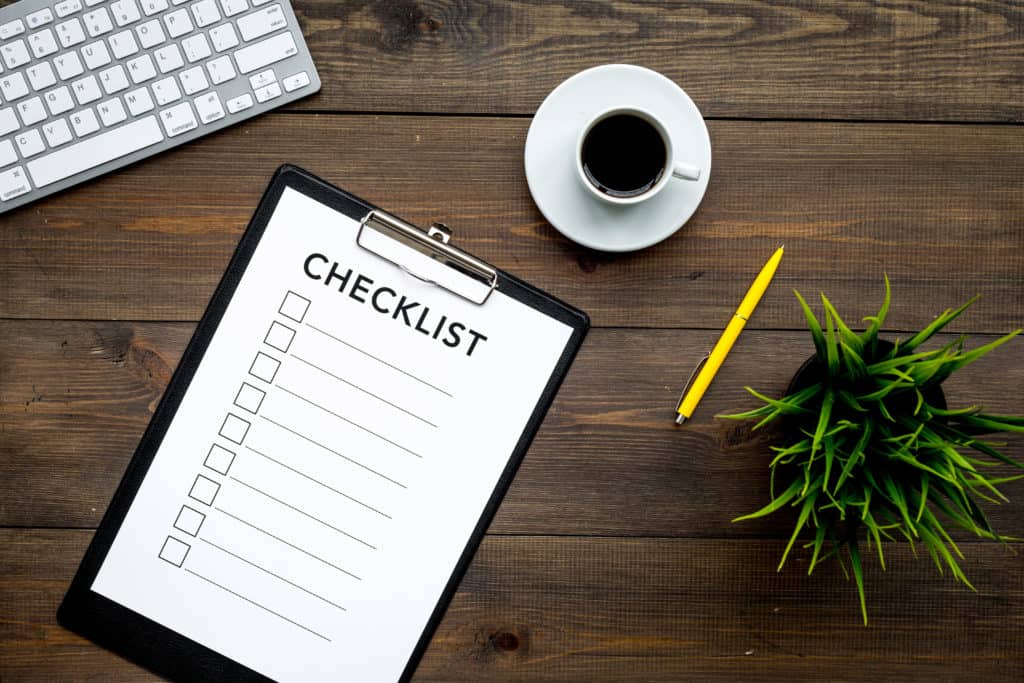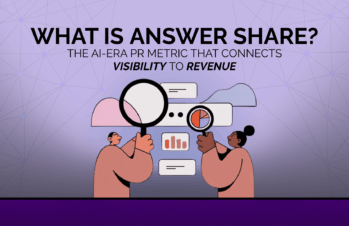Whether you’re planning your first or your 100th B2B tech public relations campaign, checklists always come in handy.
We worked with our media relations specialists to come up with a PR campaign checklist for B2B tech brands. We’ll go through it in depth below, but you can also download the checklist by itself here.
Download A 24-Point PR Checklist Proven to Maximize Your B2B Public Relations Strategy
Phase 1: Know your goals and how PR will help you reach them
Understand PR
Know the difference between PR and paid or owned media.
PR is earned media—in other words, coverage of your brand that isn’t paid for or created by you. If a journalist wants a quote from your CEO for a story on your industry, or a blogger cites your resources as a way for readers to learn about X, that’s earned media.
Paid media is media coverage you purchase, like a sponsored post with an influencer, or a sponsored article in a news publication.
Owned media is media that your brand creates and owns, like your blog posts, webinars, social media posts, reports, etc.
A critical takeaway here: your brand does not have control over earned media. Your PR efforts will, hopefully, result in positive brand mentions and a wider awareness of your brand overall. But the reporter, blogger, or whoever is producing the coverage ultimately gets the final say on what they include, what they cut, and what message they deliver.
Related Reading: Key Differences Between PR, Marketing and Advertising—and When You Should Use Each for Your Brand
Understand the Importance of PR
Know how PR will fit into your overall sales and marketing strategy
PR plays a definite role in boosting sales and expanding your audience, but only if it’s done strategically. That strategy comes from the goals you set, which we’ll get into below.
Define Your Goals
Identify your goals with your PR strategy.
Do you want to generate excitement about a product launch? Increase brand awareness among a specific demographic? Support your COO’s thought leadership?
Figuring out exactly what you’re trying to accomplish with your PR campaign will make it much more likely that you will, in fact, accomplish it. This will help your team or your B2B PR agency target their pitches toward the right outlets and creators.
Identify Your Target Audience
Once you’ve nailed down your goals, it’s time to zero in on your audience.
You’ll be drawing mainly on any research your sales and marketing departments have already done in terms of who your customer is, who your desired customer is, their pain points, their needs, etc.

If you don’t have this research, you can always start by identifying the audience you want. Where do they hang out online? What’s their buying journey like? What conversations are they having?
Additional steps to take:
- Research audiences, customers, pain points, audience needs/desires, etc
- Consider sending out a survey to collect customer data
- Conduct interviews with prospects, existing and former customers
- Create buyer personas based on your research
- Get buy-in on personas from the sales team
Research Content, Topics, and Stories
Know what is performing best with your audience.
Now you know who your audience is, you have to know what they’re reading, listening to, and watching.
Related reading: The Ultimate Guide to Buyer Personas
Using social listening tools can help you identify trending conversations, topics, and issues that are important to your audience. And of course, doing some good old-fashioned reading in the publications you want your brand to appear in never hurts, either.
Phase 2: Put your B2B PR plan into action with pitches and outreach
Identify Outlets, Influencers, Partners and Media Contacts
Now, you’re ready to start a list of the people, organizations, and outlets that you want to pitch.
The easiest way to do this is to use a paid PR tool or work with a B2B tech PR agency that already has those contacts ready to go.
However, you can also find contacts by looking at the mastheads of the publications you’re targeting, Google searching reporters and writers you know by name, and using hashtags to search on social media sites like LinkedIn and Twitter. Sometimes, editors and writers who want pitches will announce it on those platforms using a hashtag like #pitches, #pitchme, #journalism, etc.
Additional steps to take:
- Using a media database tool, you can find some relevant media contacts and outlets
- Read industry publications to identify potential media connections
- Review social media channels to uncover journalists and influencers who are discussing industry topics and competitors
- Follow competitors and review competitor sites to see who has covered them
- Develop a comprehensive list of relevant media contacts and influencers
Reach Out to Media
Send valuable, newsworthy pitches that highlight your company, services, or products.
While you don’t need to create an individual pitch for every single reporter or outlet you’re pitching, you should take the time to make each one personal and relevant for the recipient.

If you’re pitching a magazine like Wired, which often centers its tech features in the context of current events or larger trends, you’ll need to make it clear how your brand fits into that larger context.
If you’re pitching a review site, it’s much simpler: you’ll need a concise, straightforward pitch asking them to review your product.
It always helps, too, to have a good feel for what the writer you’re pitching has covered before. That way, you’ll not only craft a better, more personalized pitch for them, but you can also let them know that you’re not just pitching blind—you’ve actually read their work before.
Additional steps to take:
- Use SEO to inform which topics are driving the most website traffic
- Craft well-thought-out pitches that provide valuable, informative or contrarian takes
- Keep the momentum going with continued follow-up with media contacts and share any and all relevant information that applies to their audiences
Phase 3: Track Your Results
Track Outreach
As you start getting results in terms of responses, requests for quotes, interviews, and other earned media coverage, keep track of everything in a spreadsheet, Word document, or using a productivity tool like Basecamp.
This means tracking:
- Contacts’ responses: who replied, who didn’t
- Contacts’ preferred formats for pitching, if any
- Potential future needs or topics the contact is interested in
- Which outlets your brand secured coverage in
- Reach of those outlets

Your B2B tech brand may secure coverage without even being aware of it, as some outlets may use your pitch or press release, but not contact you to let you know. This is why regular Google searching for coverage is so important.
- Gather metrics about your PR success. It may include information on the amount of coverage, sentiment, potential reach, advertising and equivalency, and more
- Develop a report and share your findings, metrics, and success with all relevant shareholders
Phase 4: Share and gather momentum
Amplify!
You’ve gotten coverage—does that mean your PR campaign is over? Far from it! Now’s the time to really ramp up your own marketing and amplification efforts by sharing every piece of coverage you get through your social channels, on your website, and in other marketing channels.
The goal is to take the coverage you’ve already gotten to help generate even more—for instance, a Reddit AMA, a Clubhouse panel, or a speaking slot at a conference or industry event.
By continuing to share your coverage widely, and parlay it into additional opportunities, you’ll be greatly increasing your ROI from that single PR campaign.
At Zen, we take the amplification stage seriously—in fact, as an agency with our roots in social, amplification is where we really shine. From SEO and paid ads, to implementing social campaigns based on your press coverage, we make sure brands get as much mileage as possible out of each and every mention, feature, interview, and appearance.
If this sounds like a lot, well—it is. But B2B tech PR is absolutely worth it in terms of ROI, sales and lead gen, and brand-boosting. If you’d like some help, get in touch, and download the full checklist below.




